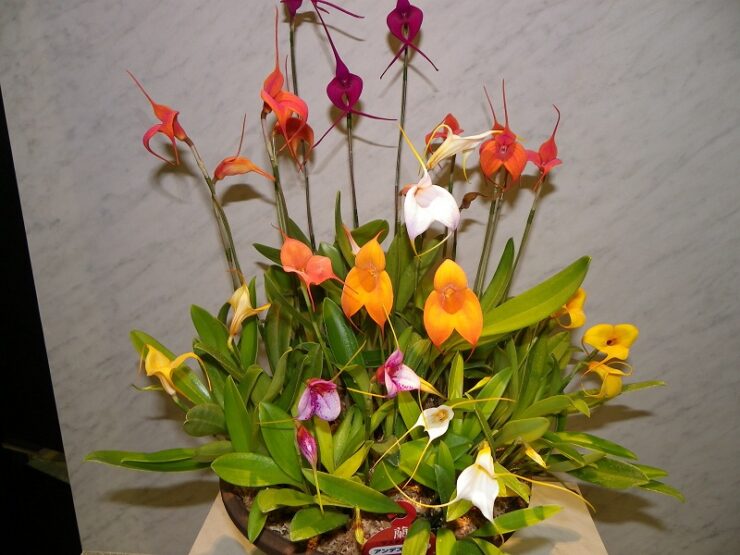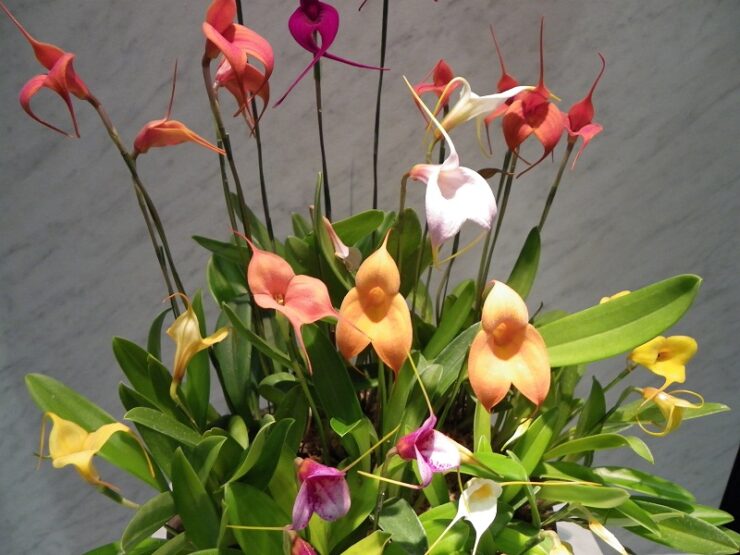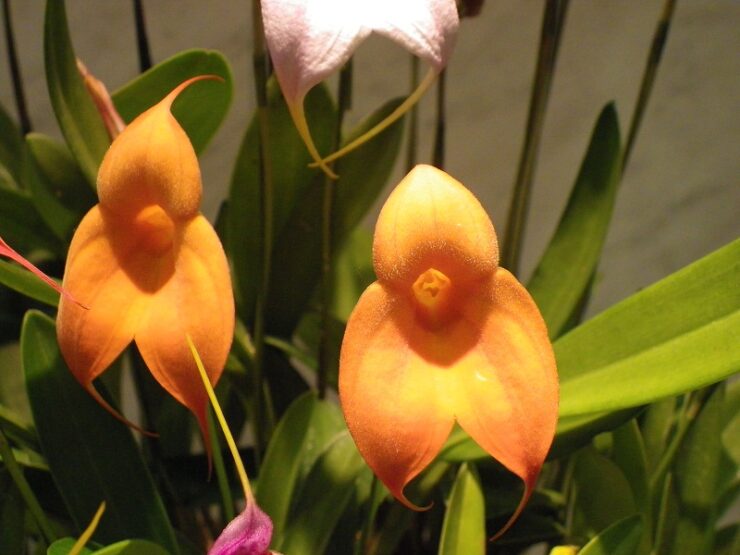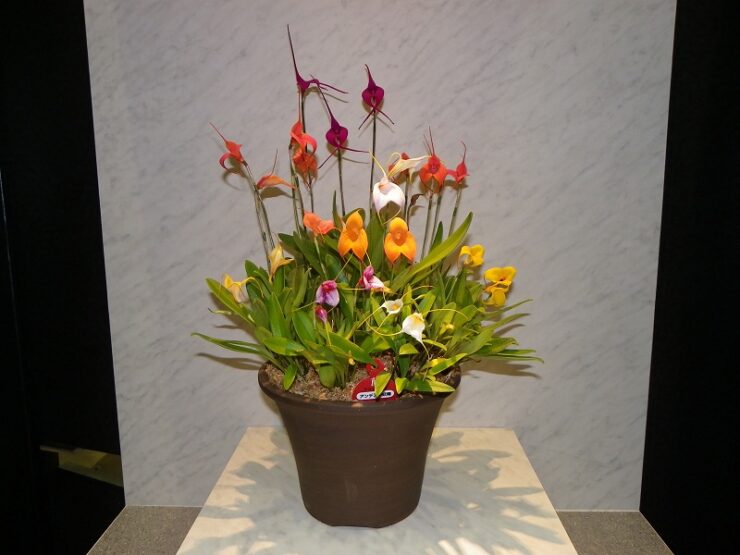In this article, we will explore the captivating allure and importance of the May birth orchid, known as the Masdevallia, which holds a unique position in the realm of flowers and is highly esteemed for its remarkable appearance and cultural symbolism.
The Masdevallia is a favored choice among orchid enthusiasts due to its dainty, yet striking appearance, with petals that come in a range of colors from white and pink to vibrant reds and oranges.
Beyond its enchanting beauty, this orchid also holds cultural significance in various regions around the world. In some cultures, it symbolizes strength, wisdom, and beauty, while others regard it as a representation of purity and innocence.
As we delve deeper into the May birth orchid, we will uncover the various meanings and traditions associated with this extraordinary flower.
History of the Orchid Masdevallia

The history of the Masdevallia orchid dates back to the early 19th century when it was first discovered and described by botanists exploring the diverse flora of the South and Central American tropics. The genus Masdevallia, named in honor of Spanish botanist and physician José Masdeval, comprises more than 500 species, making it one of the largest and most diverse genera within the Orchidaceae family.
Native to the Andean cloud forests of countries like Colombia, Ecuador, Peru, and Bolivia, the Masdevallia orchid thrives in cool, high-altitude environments with ample humidity and diffused light. The unique habitat in which these orchids grow has contributed to their distinct features and captivating beauty.
The Masdevallia orchid is characterized by its small to medium-sized flowers with a triangular or tubular shape, and three elongated sepals that often fuse together at their base, forming a tube-like structure. The petals and lip are generally smaller and hidden inside the sepal tube. The vibrant colors and intricate patterns of the Masdevallia orchid have fascinated both horticulturists and collectors alike for centuries.
Today, the Masdevallia orchid continues to be a popular choice among orchid enthusiasts, not only for its striking appearance but also for its cultural and historical significance. As hybridization and cultivation techniques have advanced, numerous new and captivating Masdevallia varieties have been developed, making it an ever-evolving and enduring symbol of natural beauty and botanical history.
Symbolism and Cultural Significance
The Masdevallia orchid, with its distinctive and vibrant appearance, carries a rich tapestry of symbolism and cultural significance throughout various regions of the world.

In many cultures, the Masdevallia orchid symbolizes love and affection, as its striking colors and unique shape make it an exquisite and eye-catching gift. The orchid’s long-lasting blooms represent the enduring nature of relationships and the resilience of love.
Strength and courage are also associated with the Masdevallia orchid, as it thrives in the challenging conditions of high-altitude cloud forests, persisting in the face of adversity. This symbolism resonates with many people who view the flower as an emblem of overcoming obstacles and flourishing despite hardships.
In some cultures, the Masdevallia orchid is associated with purity and innocence, owing to the delicate nature of its petals and its ethereal beauty. The flower’s appearance evokes a sense of refinement and elegance, making it a popular choice for ceremonial and celebratory occasions.
The Masdevallia orchid also holds spiritual significance in certain traditions. In ancient Andean cultures, the orchid was believed to possess mystical powers and was used in rituals and ceremonies to invoke protection and blessings from the gods.
In modern times, the Masdevallia orchid remains a beloved symbol of beauty, resilience, and grace, making it a popular choice for various celebrations and events, including weddings, anniversaries, and birthdays. Its rich history and cultural significance continue to captivate and inspire those who encounter this extraordinary flower.
Medicinal Purposes
While the Masdevallia orchid is predominantly known for its captivating beauty and cultural significance, orchids as a whole have been used for medicinal purposes in various traditional healing systems across the world. It is important to note that specific medicinal uses and benefits of the Masdevallia orchid have not been extensively researched or documented, so the following information pertains to the broader Orchidaceae family.
In traditional Chinese medicine, orchids have been used for centuries to treat a variety of ailments. They are believed to possess properties that can help improve lung function, boost the immune system, and alleviate respiratory issues such as coughs and asthma. Orchid tubers, known as “Shi Hu” in Chinese, are often used in herbal formulas to treat conditions like chronic fatigue, dizziness, and loss of appetite.
The indigenous peoples of Central and South America have also utilized various orchid species for medicinal purposes. Some tribes use orchid extracts to treat skin conditions and wounds, as the plants are believed to have antimicrobial and anti-inflammatory properties.
In Ayurveda, the ancient Indian system of medicine, orchids are employed to treat a range of health issues, including digestive problems, nervous disorders, and general weakness. The plants are also thought to have aphrodisiac properties and are used in traditional remedies to improve virility and vitality.
It is essential to exercise caution when using any plant for medicinal purposes, as the safety and efficacy of these treatments may not be well-established or universally applicable. It is always recommended to consult with a healthcare professional before using any herbal remedies or supplements. While the medicinal uses of orchids are intriguing, the Masdevallia orchid is primarily celebrated for its stunning appearance and rich cultural symbolism.

Fun Facts
Here are some fun facts about the Masdevallia orchid and orchids in general:
- Masdevallia orchids are sometimes referred to as “kite orchids” or “triangular orchids” due to their unique triangular shape formed by their elongated sepals.
- The cloud forests where Masdevallia orchids naturally grow are also home to a diverse range of other flora and fauna, including various species of hummingbirds, which are key pollinators for these orchids.
- The Orchidaceae family is one of the largest and most diverse families of flowering plants, with over 25,000 species and more than 100,000 hybrids.
- Orchids can be found on every continent except Antarctica, making them one of the most widespread families of flowering plants in the world.
- Some orchid species are known to be mycoheterotrophic, meaning they rely on a symbiotic relationship with fungi to obtain nutrients, as they do not produce their own through photosynthesis.
- Vanilla, a popular flavoring used in various food products, is derived from the seed pods of the Vanilla planifolia orchid, native to Mexico and Central America.
- Orchids have a unique reproductive structure called the “lip” or “labellum,” which often plays a crucial role in attracting pollinators through its color, shape, or scent.
- The world’s smallest orchid, Platystele jungermannioides, has flowers that are only about 2mm wide, while the largest, Grammatophyllum speciosum, can have flower spikes up to 8 feet long.
- Orchid seeds are among the smallest seeds in the world. They are so tiny that they do not have the necessary nutrients to germinate on their own, which is why they rely on a symbiotic relationship with fungi to germinate and grow.
- Charles Darwin, the renowned naturalist, had a strong interest in orchids and published a book in 1862 titled “On the Various Contrivances by Which British and Foreign Orchids Are Fertilised by Insects,” in which he examined the complex pollination mechanisms of these fascinating plants.
Care
Light:
Masdevallia orchids prefer bright, indirect light. Direct sunlight can scorch their delicate leaves, so it’s important to place them near a window with filtered light or behind a sheer curtain. Alternatively, you can use artificial light sources, such as fluorescent or LED grow lights, to provide the necessary light levels.
Temperature:
These orchids thrive in cool to intermediate temperatures, with daytime temperatures ranging between 60-75°F (16-24°C) and nighttime temperatures around 55-60°F (13-16°C). Sudden fluctuations in temperature can stress the plant, so try to maintain a consistent environment.
Humidity:
Masdevallia orchids require high humidity levels, typically between 60-80%. To maintain the necessary humidity, place the orchid on a humidity tray filled with water and pebbles, use a room humidifier, or regularly mist the surrounding air. Avoid misting the flowers directly, as this can lead to rot.
Watering:
Keep the potting medium consistently moist but not soggy. Water the plant when the top layer of the medium feels slightly dry, using room-temperature, filtered, or distilled water. Ensure that the pot has proper drainage to prevent root rot.
Potting medium:
Masdevallia orchids prefer well-draining, moisture-retentive potting mixes. A mix of fine-grade bark, sphagnum moss, and perlite or coconut husk chips works well. Repot your Masdevallia orchid every 1-2 years, as the potting medium breaks down over time.
Fertilizing:
Feed your Masdevallia orchid with a balanced, water-soluble fertilizer, diluted to quarter-strength, every two weeks during the growing season (spring and summer). In fall and winter, reduce fertilizing to once a month.
Pruning and maintenance:
Regularly remove dead leaves, spent flowers, and any decaying plant material to prevent fungal and bacterial infections. Trim any damaged roots when repotting.
Air circulation:
Provide gentle air circulation around your Masdevallia orchid by placing it near an open window or using a small fan on a low setting. Good air circulation helps prevent diseases and encourages healthy growth.
FAQ
How often do Masdevallia orchids bloom?
Most Masdevallia orchids bloom once or twice a year, typically in spring and/or fall. The duration of the bloom varies by species, but the flowers can last anywhere from a few weeks to a couple of months.
Can Masdevallia orchids be grown outdoors?
A: Masdevallia orchids can be grown outdoors in regions with cool to intermediate temperatures and high humidity. However, they should be protected from direct sunlight, extreme temperature fluctuations, and strong winds. In most cases, they thrive better in controlled indoor environments.
Are they fragrant?
While some Masdevallia orchids have a subtle fragrance, most are not known for their scent. They are primarily appreciated for their unique shape and vibrant colors.
Are Masdevallia orchids toxic to pets?
Most orchids, including Masdevallia, are considered non-toxic to cats and dogs. However, it is always best to prevent pets from chewing on plants, as ingestion can still cause gastrointestinal upset.
Conclusion
The captivating Masdevallia orchid, with its unique shape and vibrant colors, is a beloved symbol of beauty, resilience, and grace. Its rich history and cultural significance make it a popular choice for various celebrations and events. By following proper care guidelines, you can create an environment in which your Masdevallia orchid will flourish, providing you with stunning, long-lasting blooms to enjoy.
If you like this article read more here about June and August birth orchids.
